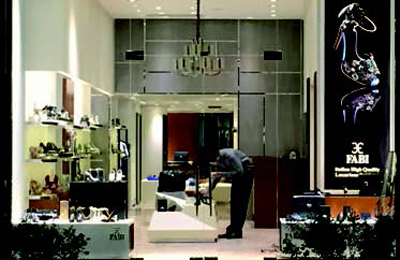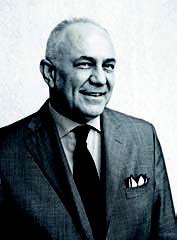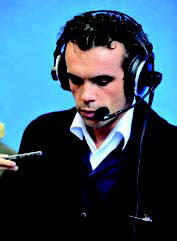Even if the export volumes of Italian footwear to Iran right after the ending of the embargo were nothing to get excited about, they did instead register important uptrends previous to this date: +76% in value and +115.2% in volume in 2015, with 84,336 pairs sold, for a value of 3.33 million euros.
This important economic upturn did not go unnoticed by Assocalzaturifici, which already in December 2015 had sent an exploratory mission to this country headed by Andrea Brotini:
“For us, Iran is a market that should be closely followed, offering in the mid to long-term period interesting opportunities”, – is what the Vice President of Assocalzaturifici, in charge of internationalization, Asia, and Emerging Countries, had previously stated, “-For the moment, notwithstanding the presence of both monobrand and multibrand companies, including some important brands like Moreschi, Fabi, and Geox, the market still finds itself in a difficult situation… nevertheless, there is great potential for Made in Italy, which here is known for its quality and its glamorous aura. With the embargo gone, our wish is to see a rapid acceleration of business in this market…”
At a distance of one year from this statement, unfortunately, the hoped-for acceleration has still not occurred for a series of reasons. Besides the current recessive phase of the global economy, which has been less then encouraging, Iran has two big obstacles that must be overcome: the increase in import duties on footwear, which rose from 70 to 120%, creating a big disadvantage for already expensive Italian footwear; and the underdevelopment of the Iranian credit system, making payments difficult. It is exactly these two factors that have put a halt to the projects of leading Italian designer labels for the Iranian market.
 Those, instead, who have held fast in the face of these difficulties, have continued to strengthen their positions, like Moreschi and Fabi, for example. The Vigevano company, which has been present in the Iranian market since the reign of the Shah, maintained its business relations with Iran even after the Islamic revolution, through the free port of Kish Island. It was also the very first company to open up a store in the capital, in 2013, at the Modern Elahiyeh Mall…
Those, instead, who have held fast in the face of these difficulties, have continued to strengthen their positions, like Moreschi and Fabi, for example. The Vigevano company, which has been present in the Iranian market since the reign of the Shah, maintained its business relations with Iran even after the Islamic revolution, through the free port of Kish Island. It was also the very first company to open up a store in the capital, in 2013, at the Modern Elahiyeh Mall…
We are currently present in even 4 to 5 multibrand stores in Teheren – explains Mario Moreschi, CEO of the company –. In the future, we would like to see our brand expand, and so, we are planning a second opening in Teheran, and we are also thinking of making an investment outside of the capital, though we haven’t decided yet in which city…

Strong from this experience, Mario Moreschi offers some advice to those interested in doing business in this market:
Those fortunate enough to focus on the premium and luxury range, will immediately be recognized by this market: Iranians are people who travel, who are connected to the social network, who are familiar with international brands and careful of fashion… the middle class has access above all to products that are Turkish in origin, but also Iranian and Chinese… there might be some opportunities for a mid-range Made in Italy proposal… my advice to those who are interested in approaching this market is: first, register the brand to protect it. Second, start taking trips to Iran to find retailers and cement business relations. It is not easy, because it is a market that is starting up right now, and it is difficult to find the right contact, but this is the path to go down.

In agreement with this statement is Fabi, which has had a store in the capital for the last two years at the City Star Mall:
It cannot be denied that there is a focus on Italian products, which are considered fashionable and attractive: an argument that Iranians, the heirs to the rich tradition of Persian culture, are attuned to – declares GianMaria Vacirca, Head of Marketing & Communication at Fabi –. The feeling, however, is that the Iranian market is in search of a price range inferior to that of Made in Italy: it’s obvious that for the premium range, where Fabi’s products are positioned, there is always a small percentage of people with the means to purchase the product. However, for others, the price is a deciding factor.
Today, the situation is further aggravated by the increase in customs duties that penalizes Italian footwear over local products, even with the big quality gap between the two.
Notwithstanding the disadvantages, the strategy of waiting to see what will happen is not rewarding, and the businesses that do not rush to introduce their products to the Iranian market could be excluded in the future: one way for a business to establish its fi rst contacts with this market is through the two main Italian trade fairs of reference; theMICAM for high-end fashion products; and Expo Riva Schuh for volume footwear. At the last editions of these fairs, the careful scouting eff orts of both have allowed for the organization of incoming services for Iranian buyers: an opportunity that more farsighted companies have already seized upon, making their fi rst contacts with a market that has not yet expressed its full potential.




